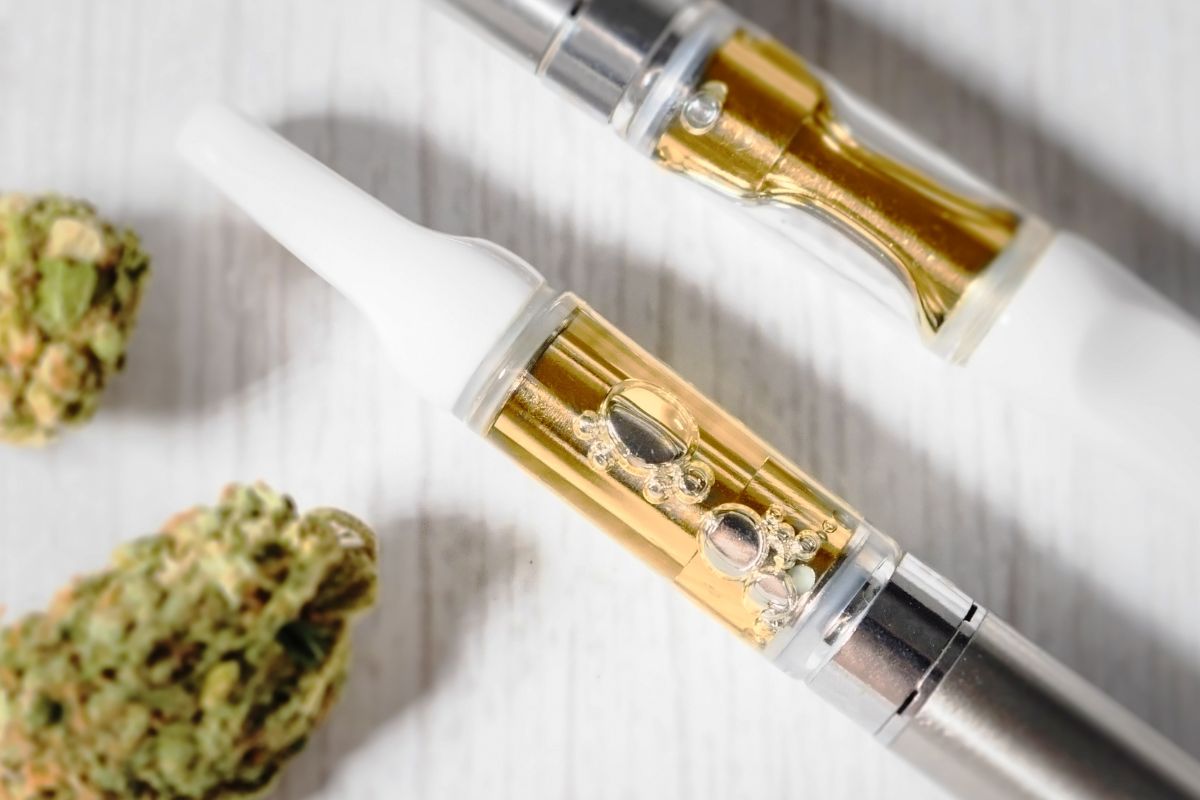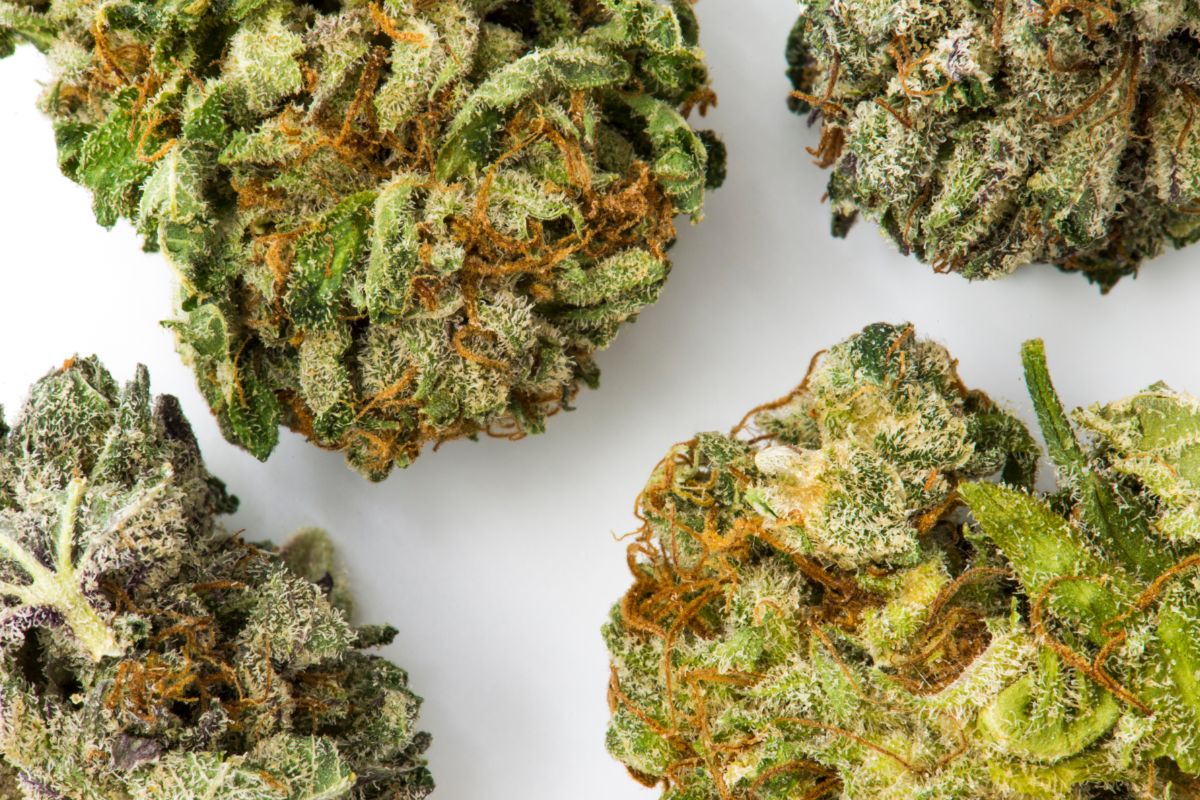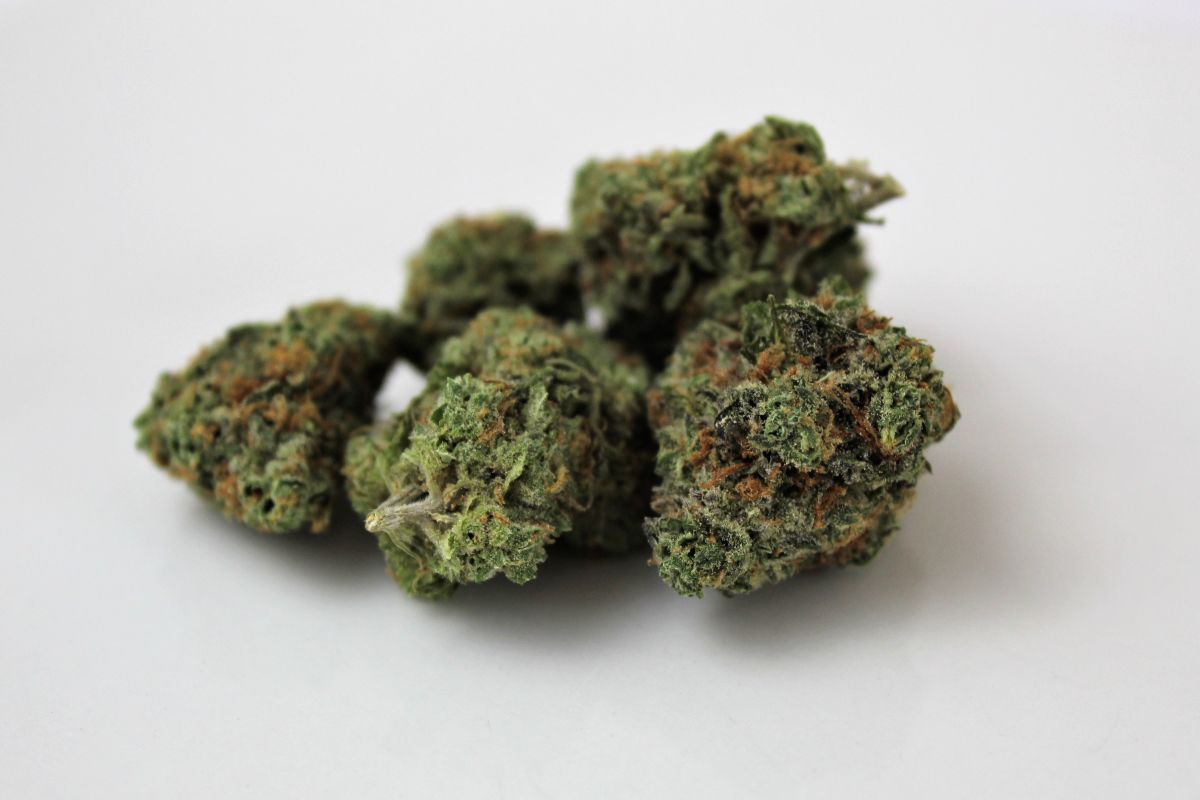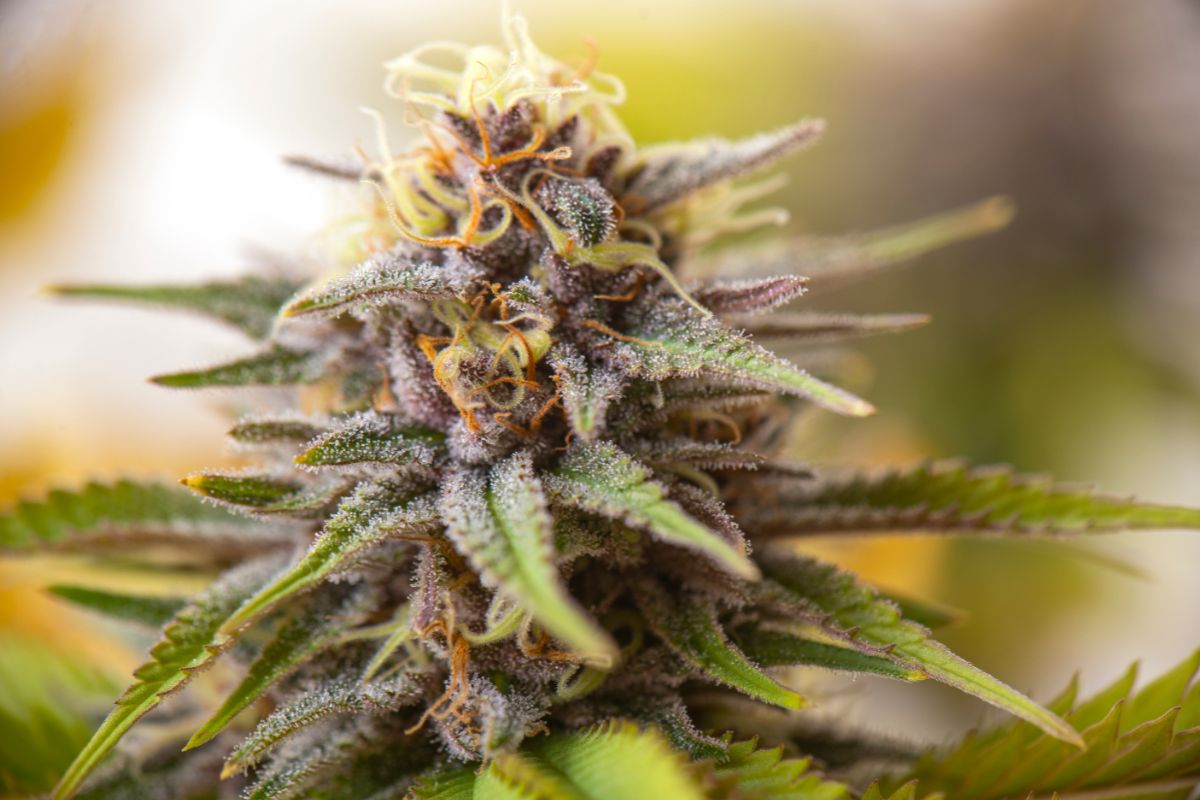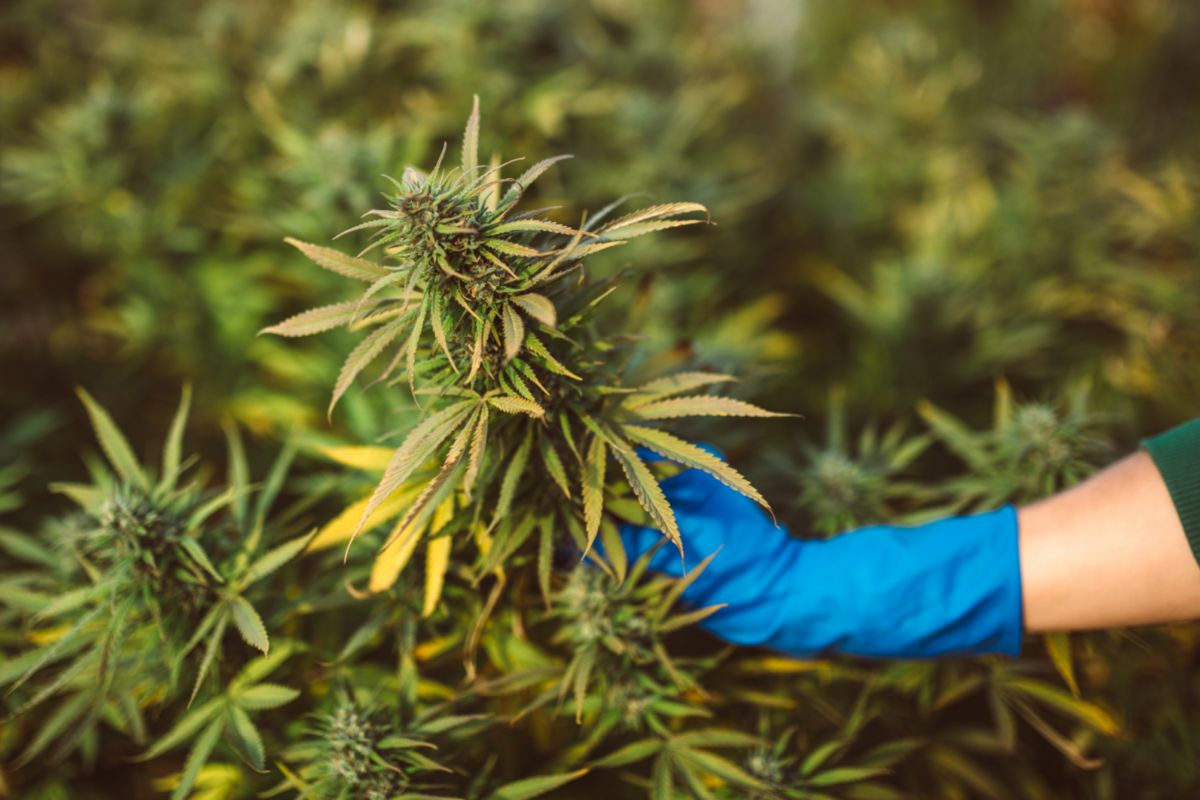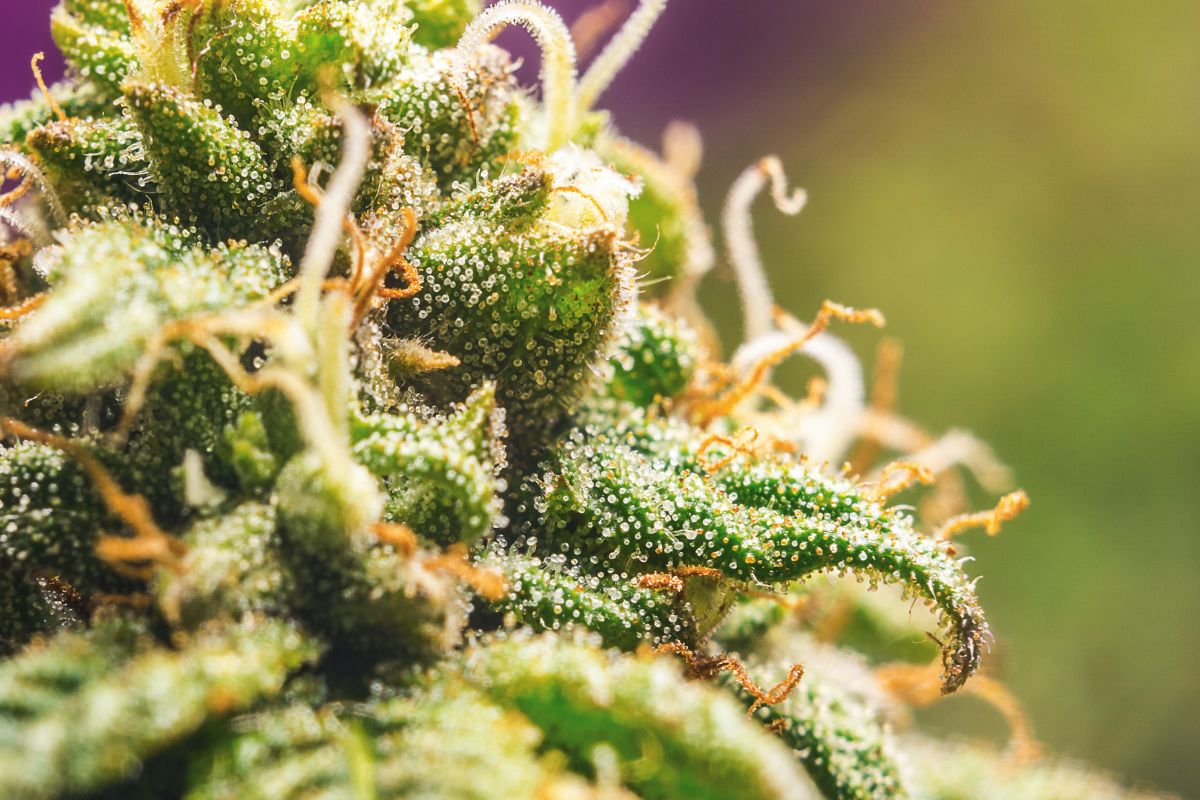If we asked you to picture the average cannabis user, and your mind’s eye has conjured up a couch-locked, sleepy potato… you wouldn’t be wrong, but you’d probably be imagining an Indica user, rather than a Sativa user.
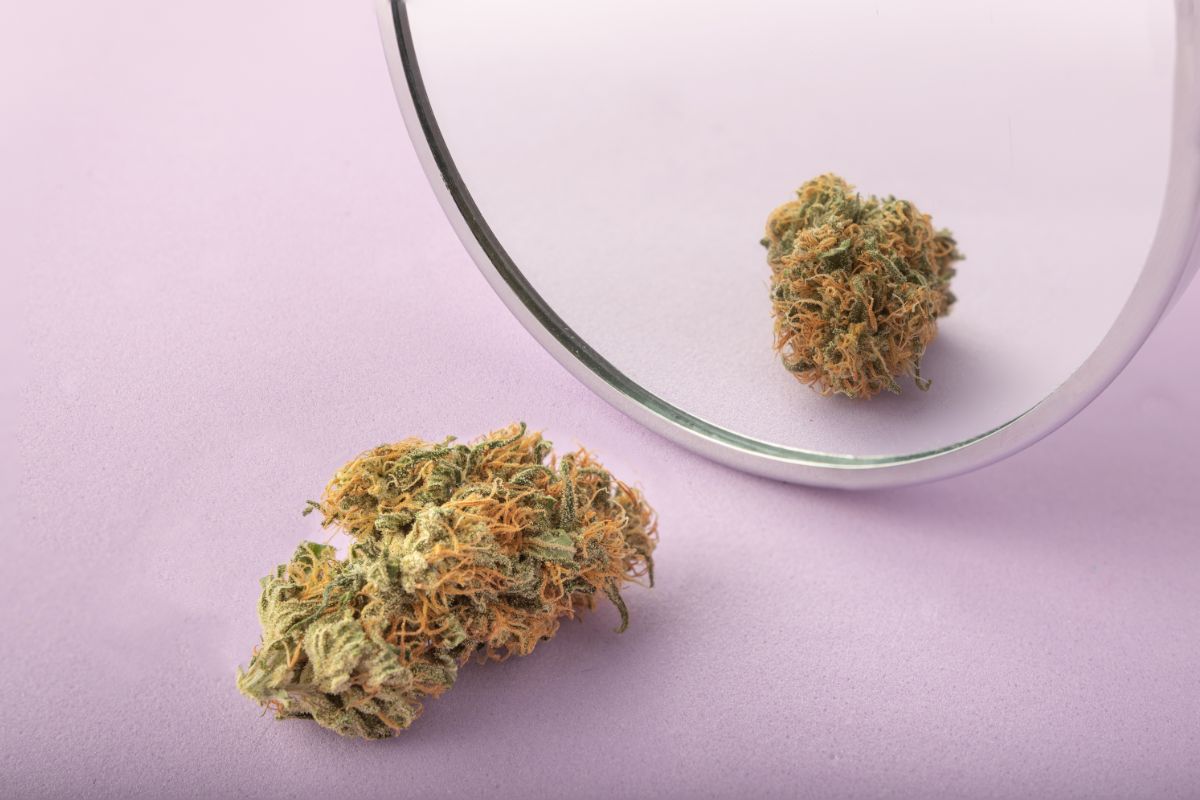
Cannabis Indica offers its users a more relaxing, mellowed high that’s renowned for its sedative-like properties, and insomnia treatment. On the other hand, Cannabis Sativa is a little more upbeat.
Sativa strains are celebrated for their creativity, energy, and positivity, and they tend to offer their users a more intense, psychoactive high. Not sure which strain is right for you?
In this article, we’re taking a deep dive into the world of Cannabis Sativa. We’ll discuss what it is, its benefits, how it affects the brain, and how you can decide if it’s right for you.
What Is Cannabis Sativa?
Cannabis sativa is one of the two main types of cannabis.
Cannabis Sativa plants often grow much shorter than Indica plants; they’ll have taller, narrower leaves, be less potent (sometimes with less THC), and they’re known for offering their users more of a head high, than a body high.
Cannabis Sativa is often grown in warmer parts of the world, such as South America and Southeast Asia, although optimal growing conditions can be recreated in almost any climate – with the right equipment.
Cannabis Sativa has been cultivated throughout history and was harvested largely for its seeds, oil, and fiber, which have been used for nutritional, medicinal, and even industrial purposes.
Each strain of cannabis Sativa will have its own unique chemical makeup, consisting of a selection of terpenes that determine its flavors and aromas (see also “5 Of The Best Cannabis Strains To Become A Talkative Person“).
The Effects Of Cannabis Sativa
While Cannabis Indica is usually ingested at night, you may find Cannabis Sativa more compatible with your day-to-day activities.
For most users, the effects of Cannabis Sativa can be likened to ingesting coffee – you’ll probably benefit from increased energy, happiness, euphoria, and creativity. While Cannabis Indica is predominantly sedative, Sativa strains are the opposite.
Cannabis Sativa often has lower doses of CBD and a higher THC content.
Cannabidiol (CBD) is an active ingredient in cannabis that does not generate a high, is not addictive, and provides most of the therapeutic effects of cannabis, such as relief from stress, anxiety, depression, inflammation, and pain.
On the other hand, tetrahydrocannabinol (THC) is the psychoactive ingredient found in cannabis, and it’s responsible for producing that notorious ‘high’, and the mental effects of cannabis.
THC is one of approximately 113 cannabinoids found in the cannabis plant, but it’s arguably the most powerful.
Although the ratios of CBD and THC in Sativa vary between strains, the average Sativa strain will have a CBD concentration of below 1%, and a THC content of between 17-23%.
This is why you’ll usually feel more euphoric and upbeat when you ingest Sativa, whereas Indica (with its higher concentration of CBD), puts most users in a more relaxed, sedative state. If you ingest Cannabis Sativa, you may experience some of the following side effects:
- Altered or enhanced senses, such as improved taste, or seeing brighter colors
- An altered sense of time
- Elevated mood
- Slower body movements
- ‘The Giggles’
- Increased appetite, AKA the munchies
- Dry mouth
- Increased heart rate
- Facial flushing
- Dizziness
- Decreased anxiety and depression
Although most of the side effects of Cannabis Sativa are positive, it doesn’t come without its drawbacks. Not all users react positively to cannabis, and Sativa strains (known for their particularly high THC content), can cause unwanted side effects in some users.
Some of the most frequently reported negative side effects can include:
- Feeling sick
- Increased paranoia
- Increased anxiety (most common in the first 30 minutes after ingestion)
- Impaired short-term memory
- Slurred speech
- Decreased reaction times
- Increased likelihood of developing social anxiety
- Lung damage from consistent smoking
The Benefits Of Cannabis Sativa
Although cannabis can affect everyone differently, most users report positive effects from ingesting cannabis, specifically cannabis Sativa. Here are some of the most positive effects reported from using cannabis Sativa:
Pain Relief
Cannabis, including cannabis Sativa, may reduce the symptoms of chronic pain. Cannabis may be particularly useful for patients suffering from chronic pain, and the cannabinoids that act on the receptors of the brain may be responsible for this pain relief.
May Help Treat Epilepsy
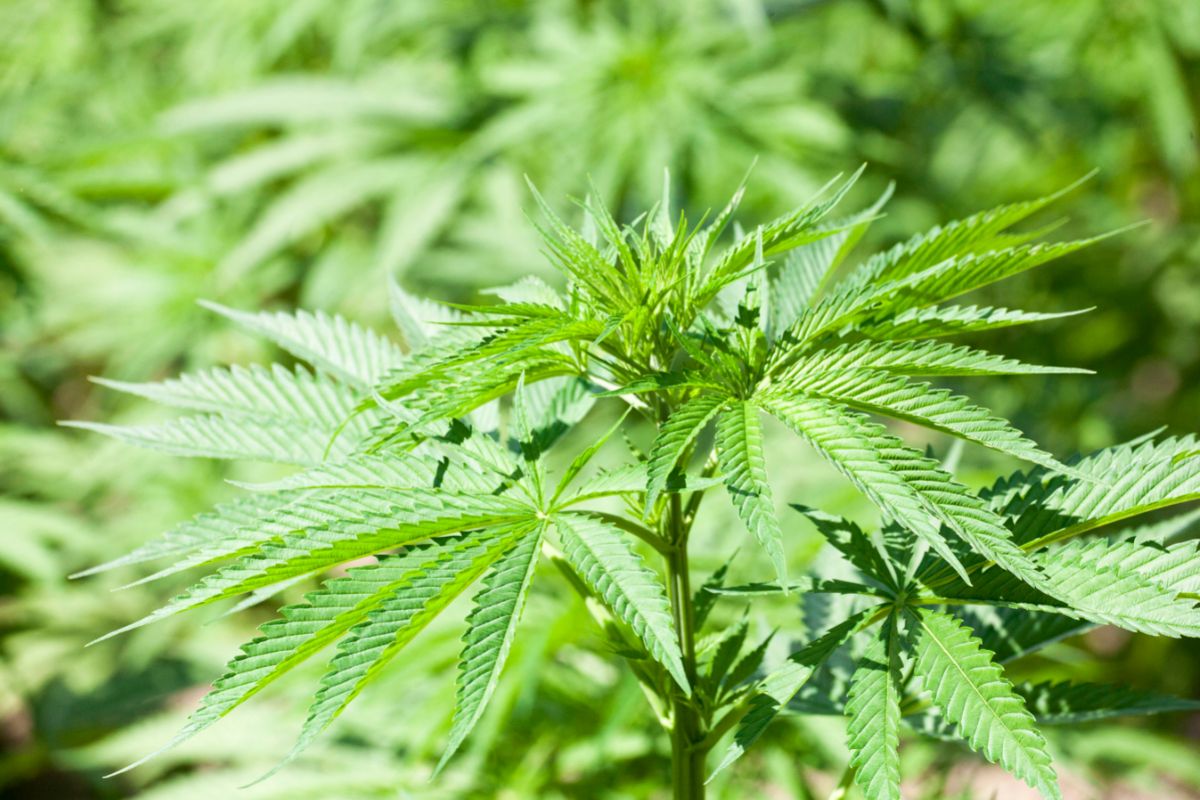
There’s also evidence to suggest that cannabis Sativa may be an effective treatment for epilepsy patients. Although cannabis Sativa could also provide some relief, it seems that strains with a higher CBD content may be the most effective.
Some studies have also shown that cannabis strains can be particularly effective for children suffering from epilepsy.
Reduced Depression And Anxiety
Cannabis, including both Sativa and Indica strains, may also be an effective treatment for both anxiety and depression. Users have reported decreased feelings of anxiety and depression in the short term, however, these effects aren’t guaranteed.
Some users can experience the opposite, and regular users may be at an increased risk of developing long-term social anxiety.
Reduced Symptoms From Cancer Treatment
Studies have shown that patients receiving cancer treatments like chemotherapy, may benefit from using cannabis to reduce unwanted symptoms like nausea and vomiting. This is true for all methods of ingestion, including smoking, edibles, and vaping.
Although early studies have shown promising results, the long-term effects are unknown, and there is still no hard evidence to suggest that cannabis can provide a cure for cancer.
The Most Popular Cannabis Sativa Strains
Sativa is an umbrella term for one of the most popular types of cannabis. However, there are a variety of Sativa strains to choose from, and no two are the same.
Want to know which Sativa strains may be the most beneficial for you? Let’s take a look at some of the most popular Sativa strains below, and their reported health benefits (see also “What Is The Healthiest Vape?“).
- Strawberry Cough: Produces a mind-focused high, relaxes the body, and boosts energy and creativity. May be an effective treatment for ADHD symptoms and anxiety (see also “Is Sativa Better For Anxiety Or Indica?“).
- Harlequin: Harlequin provides an effective body high without any sluggishness. This strain may be effective for relieving nausea, pain, inflammation, and anxiety.
- Sour Diesel: Sour Diesel provides its users with a sudden surge of mental and physical energy, and it can help relieve stress, low mood, and boost creativity. It may also be effective at managing symptoms of PTSD and ADHD.
- Durban Poison: This strain is known for being uplifting and energizing, and it’s one of the most potent Sativa strains out there. This strain is usually used for managing migraines, treating nausea, alleviating depression, and it may even help manage the symptoms of epilepsy.
- Green Crack: Green Crack is a popular strain that has been used for decades. Green Crack is made by crossing skunk with an unknown Indica, and it is known for increasing energy, elevated mood (aka the giggles), and increasing appetite. It’s great for daytime use and can be used to manage anxiety, depression, reduced appetite, nausea, and PTSD.
Final Thoughts
Cannabis Sativa strains are uplifting, energetic, and euphoric. While Indica tends to turn you into a couch potato, Sativa is a more ‘get up and go’ type of cannabis that can leave you feeling creative, refreshed, and ready to face the day.
Remember: cannabis affects everyone differently. There are many strains of Sativa available, and not all of them will produce the same effects. Do your research carefully before choosing a strain.
- Avida CBD Review - January 16, 2023
- Hybrid Strains: A Comprehensive Breakdown - January 16, 2023
- Blueberry Cookies Strain – Everything You Need To Know - January 16, 2023

